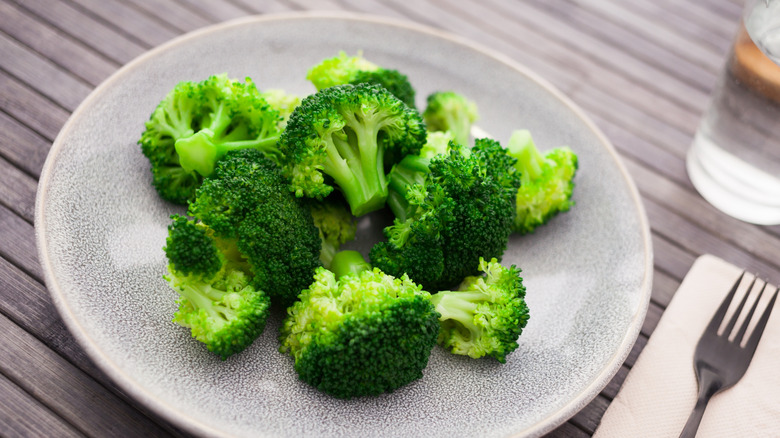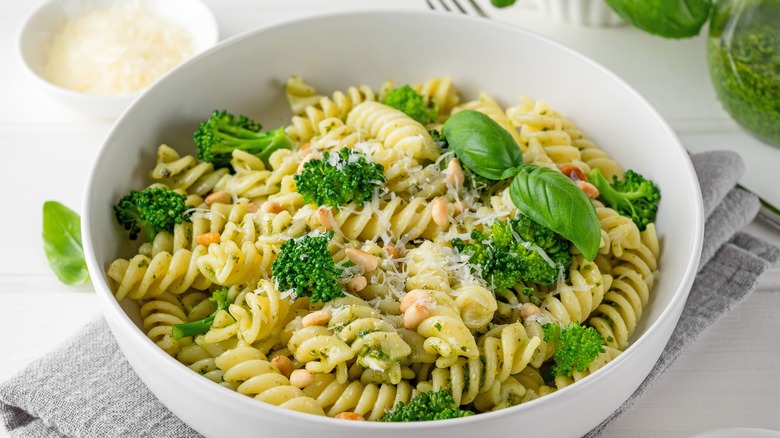How Long To Boil Fresh Broccoli For The Perfect Texture
Broccoli is a controversial veggie. Some people love it, while others pull a face at its mere mention. Despite this reputation, broccoli has become a mainstay in a wide variety of recipes and culinary applications — and for good reason. It's a nutritional powerhouse full of vitamin C, potassium, folate, iron, and fiber. When cooked properly, it adds a ton of nutrition and delicious earthy flavor to soups, salads, and even pasta dishes.
One of the fastest and easiest ways to prepare fresh broccoli for any recipe is to boil it. Boiled broccoli may not sound like the most exciting cooking method, but it's one of the quickest and easiest. A brief boil preserves broccoli's vibrant green color and also turns the tree-like veggie into a toothsome blank canvas ready to be elevated by other ingredients and flavors.
To boil your broccoli properly, fill a medium-sized pot with water, add a pinch of salt, and bring it to a rolling boil. While that's happening, rinse your fresh broccoli and chop it into 1-inch pieces, or as close to 1 inch as you can get. Next, carefully drop the broccoli into your boiling water and let it cook for 3 minutes. After this short dip the broccoli should be tender-crisp — easy to bite through, but with a touch of crispness left. You may boil it for longer if you prefer soft veggies, but keep in mind your broccoli may become mushy and the longer it boils the more nutrients you'll lose.
Making boiled broccoli the star of the show
The main objection some people have to broccoli is the earthy, slightly sulfurous flavor all cruciferous vegetables share. While boiling doesn't cover this slightly bitter taste, it does prep the broccoli to take on other flavors. Some of the tastiest ways to elevate your broccoli involve pairing it with acids or fats. The acids in a garlicky marinara sauce, for instance, soften broccoli's bitterness to give it a pleasant, almost nutty flavor.
Meanwhile, alfredo and other cream-based sauces coat the broccoli in luscious fats to deepen its earthiness so that the sulfurous taste nearly disappears. Something similar occurs in classic broccoli cheddar soup, especially when garnished with pork or turkey bacon. Broccoli's flavor seems to enhance bacon's smokey flavor as both are elevated by sharp, salty cheddar cheese.
If you plan to use your broccoli in cold applications, such as a delicious broccoli salad or tucked inside a veggie-rich wrap, you can shock it in an ice bath after boiling rather than waiting for it to cool. To do this, fill a large bowl with water and ice before cooking your broccoli. When the vegetable is boiled to your liking, turn off the heat and use a slotted spoon to transfer it immediately to the ice bath. This stops the cooking process, cools the broccoli, and preserves its vibrant color, so your meal will look and taste delicious.

